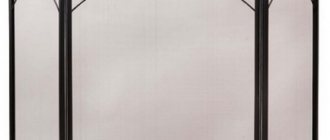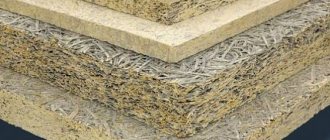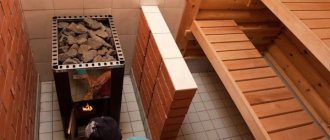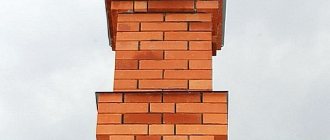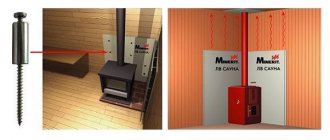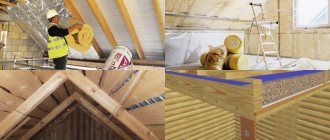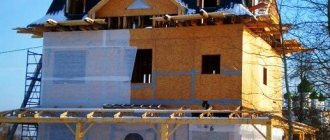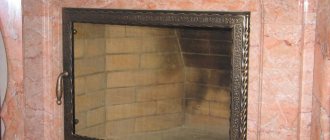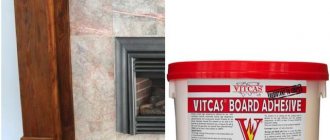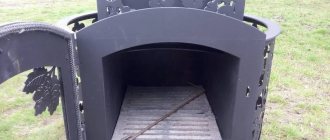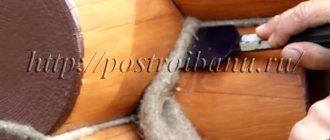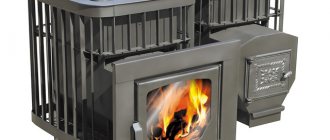Date of publication: April 16, 2020
Stove and fireplace equipment is a source of not only comfort, coziness and warmth, but also a fire hazard. The risk of fire is associated with the use of flammable fuels, as well as high temperatures of internal and external surfaces. It is important to understand that proper installation of heating equipment and components eliminates the risk of fire. It is always possible to make a heating device and chimney absolutely safe for use if you follow the established rules, fire safety standards, and follow all recommendations for installation and insulation of equipment.
This article will discuss the use of mineralite, an insulating material that is used to protect surfaces from the effects of heated areas of fireplaces and chimneys.
Why is it necessary to insulate surfaces near the fire?
The surface of many home and sauna stoves can become very hot during use and heating. Temperatures can rise to 400 degrees Celsius, sometimes even higher. An additional load on the surfaces surrounding the heating device is infrared radiation, which also affects heating. The vast majority of bathhouses and residential buildings are built of wood, or the walls are covered with wooden boards for interior purposes. Exposure to high temperatures and infrared radiation from heating stoves, especially sauna stoves, can lead to fire in wooden areas near the fireplace. Therefore, any fire safety rules dictate the need for protection - insulation of such areas with non-combustible materials. Non-flammable, such insulating surfaces will protect wooden areas from heating, charring, and the risk of fire.
Heat resistant cables
For electrical wiring equipment in conditions of high temperature and air humidity, fire-resistant channels or pipes made of asbestos-epoxy material are traditionally used. This solution provides reliable short circuit protection.
Fireproof cable for sauna with asbestos braid
But there is another problem: the channels do not protect the wiring in the bathhouse from heating and temperature degradation. Therefore, experts recommend using specialized SIAF cables, for example, N2GFAF insulated with heat-resistant silicone.
For wiring inside the house, the best solution is to lay the cable in a pipe with fire-resistant backfill. Sometimes bathhouse owners simply cover the SIAF or RKGM 1*2.5 cable with an asbestos cord at least 4 mm thick and place it in a heat-resistant casing.
Effective methods of protection
Among the most effective methods of protection against exposure to high temperatures and heat are screens made of:
- mineral wool
- basalt wool
- foam glass
- glass wool
- vermiculite
- drywall
- minerite
- of stainless steel
Using the materials listed above, as a rule, so-called screens are created - surfaces of a certain width, length and thickness, installed in close proximity to the heating product and sections of the chimney.
Protective ceiling coatings
For thermal protection of the ceiling, mineral wool sheets with aluminum foil are usually used. The thermal load on the ceiling is small, so the choice of material is determined by fire characteristics.
At the point where the chimney pipe passes through the ceiling, it is sealed with a refractory backfill; expanded clay or granulated vermiculite can be used. For steam rooms and bathhouse buildings, in which heating is provided by electric heating elements, the ceiling is lined with heat-resistant plasterboard or mineralite.
Impregnation for shelves
Most decorative and impregnating materials for benches are made on an organic varnish or oil base. With the exception of organosilicon, they are flammable and flammable, so shelves and benches, floor boards are impregnated with protective salts and dried thoroughly before being impregnated with oil or heat-resistant polyurethane or acrylic varnish.
After treatment, the surface must be thoroughly dried to maintain its fire-resistant qualities.
Often, to improve the fire-resistant characteristics of shelves, complex preparations from Tikkuril or Belinka are used, which contain special inhibitors that reduce the flammability of wood. In this case, the part of the shelves that is not used for sitting can be impregnated with fire-resistant silicone oils.
What is minerite?
It is an insulating material in the form of a cement-fiber panel (slab). It is often used for finishing work on building facades. It is heat and fire resistant, therefore it is often used in bathhouses, steam rooms and residential areas for wall insulation. The composition includes cellulose (about 10%), cement (about 60%) and mineral filler components (about 30%). The composition may vary depending on the manufacturer. Plates of material come in various sizes and colors. On top of mineralite slabs it is possible to carry out decorative finishing with other materials. It is characterized by high quality, therefore it is actively used during construction work.
Minerite is used:
- during the construction of facilities with increased fire safety requirements
- for decorative cladding of buildings
- for creating loggias and covering balconies
- for installation of ventilation facades
- as a thermal insulation material for fireplaces and stoves
Insulation of steam rooms
In addition to protecting the surfaces adjacent to the stoves, baths (steam rooms) and saunas must be provided with reliable insulation to ensure that the required temperature is maintained.
To insulate steam rooms from the inside, the following techniques can be used:
- the use of heat-insulating non-combustible materials that are most suitable for areas of high humidity in the bathhouse (usually stone or mineral wool is used for these purposes);
- arrangement of vapor barrier protection;
- creation of screens based on non-flammable aluminum foil.
Before starting insulation work, you should prepare the surfaces for laying the selected type of heat-insulating material, which is spread in the niches of the sheathing. A vapor barrier layer is installed on top of the insulation, which can be used as an ordinary polyethylene film.
A special foil film, spread directly on the insulating layer, is also suitable for arranging such protection. Currently, special types of thermal insulation material with a foil layer already present on their surface are on sale.
Decorative lining is placed on top of protective coatings and films, which can be ordinary lining, most common in a bathhouse, or any other heat-resistant material.
Main characteristics
Minerite slabs have a wide range of applications. This is largely due to a certain set of qualities – universal and convenient. So, among the characteristics of this material are:
- A light weight
- High strength
- Environmental friendliness
- Sound absorption
- No emissions of harmful substances when heated
- Increased resistance to various loads, including temperature changes
- Moisture resistance, waterproofing properties
Light weight, environmental friendliness, non-flammability, moisture resistance and resistance to temperature changes and influences have made this material in demand for creating protective screens in bathhouses, saunas, and country houses when using solid fuel heating devices.
Thermal insulation for pipes
For reliable chimney insulation, it is best to use basalt wool. The material does not burn and does not emit harmful substances after the first firing. You can buy a ready-made sandwich pipe or make it yourself. The fireproof qualities of the insulation are so great that the walls burn through more often than the protection itself.
But it is worth remembering that fiber thermal insulation works properly only in the absence of conditions for condensation accumulation. This means that the thermal insulation layer must be ventilated, and a “dry” gap must be left between the wool and the central pipe, through which water vapor will leave the chimney as the bathhouse cools.
Rules for installing mineralite panels to the wall
There are various ways of attaching slabs to wooden walls next to the furnace equipment:
- If the stove is very far from the wall, the insulation can be attached directly to the wall
- If the stove is about 50 cm away from the wall, the mineralite should be mounted on the wall with a gap of about 3 cm. Ceramic bushings should be installed in the gap itself, which should be located between the wall and the insulation board
- If the stove is located quite close to the wall of the building, it is recommended to install several insulation panels at once. One sheet can be installed flush against the wall, the second sheet can be installed with a gap, the distance of which is determined by the length of the bushings
Important! When placing a mineralite panel on the wall of a wooden structure, especially a bathhouse, it is recommended to leave about 30 mm of clearance between the bottom of the panel and the floor. This action will ensure free circulation of oxygen, which will prevent strong heating of the wall surface.
For greater reliability, it is recommended to install special supports between the bottom of the slab and the floor, which can be removed after shrinkage occurs. After removing the supports, tighten the mounting screws completely. The floor directly under the sauna heater-stove should also be reliably insulated. To do this, you need to place a sheet of mineralite under the hearth, which can be fixed with self-tapping screws. Deflection and deformation of the insulation under the stove can only be avoided if the floor at the installation site is level.
Important! It is necessary to maintain safe distances between the mineralite sheets and the stove equipment, including the chimney: it must be at least ten centimeters.
Safety in the bathhouse and sauna. Thermal protection of walls and flammable materials. Brick or mineralite.
During the construction of a bathhouse in general and a steam room in particular, many bathhouse lovers and connoisseurs ask questions: “How to protect yourself in a bathhouse?”, “How to protect the walls from the stove?”, “How to make a fireproof sauna and bathhouse?”, “From What material should thermal protection be made for a bath or sauna?
Let's look at these issues in this article and give you some recommendations and tips.
There are many materials on the market suitable for the task of thermal insulation of combustible materials from heating elements of sauna and heating stoves and chimneys.
For example:
1. Vermiculite is a wonderful material for thermal insulation work.
Feature of the material: withstands high temperatures; Quite fragile, extremely afraid of moisture.
2. Minerite is a useful material during the manufacture of any structures (boxes) protecting from direct contact with heated elements, a convenient material for covering walls as protection from stoves, boilers, chimneys.
Feature: Not afraid of moisture, convenient to cut with cutting tools; Withstands low temperatures of 150-1800C.
3. Flamma - identical material to mineralite.
4. Kerablanket is a fibrous fabric, useful for insulating flammable wooden elements.
Feature: withstands high temperatures up to 14500C; When used inside a steam room, it is necessary to cover it with additional fire-resistant materials.
5. BSTV (basalt fiber) is a very common material for thermal insulation work.
Feature: When used inside a steam room, it is necessary to cover it with additional fire-resistant materials.
6. Brick is a universal material for constructing simple thermal protection from a stove in a bathhouse or sauna.
Feature: Heavy material; It is necessary to maintain air gaps between the stove and the brick wall, as well as between the brick and the bathhouse wall made of flammable materials.
In this article we suggest that you familiarize yourself with brick and mineralite or flamma.
Imagine the situation that you are planning to install a stove in your bathhouse in a steam room or a heating stove in your house. To save space, you want to place it in the corner of the room. Let’s also take it for granted that your walls are made of “wood” (log house, frame, timber, lining, etc.).
Your task is to build a corner thermal protection configuration.
When using mineralite, it is important to know that the mineralite (Flamma) slab has fire-resistant characteristics, but it conducts heat sufficiently to understand that it cannot simply be fixed to the wall.
It is recommended to install the mineralite to the wall, then use ceramic bushings to attach a second mineralite to the already attached mineralite. Due to the ceramic bushings, an air gap is created. Also, due to the air gap, air convection will be created between the plates. This will allow the slabs to cool while the oven is running.
For example, we suggest that you familiarize yourself with photographs found on the Internet.
The second method, which we most often use, is to create a “sandwich” using mineralite (flamm), basalt fiber and metal profiles.
This method allows you to subsequently lay tiles on the mineralite wall to decorate this area.
Basalt fiber will effectively absorb the heat emanating from the furnace.
It is important that an air gap is maintained between the furnace and the mineralite wall.
If you decide to make thermal protection from brick, we recommend first of all making sure that the floor and foundation allow you to do this; it is also important to maintain an air gap between the brick and the stove, as well as between the wall and the brick.
Interesting fact, it is not necessary to use fireclay refractory bricks. In our opinion, there are no such prohibitive temperatures near the stove and red brick will also do an excellent job while maintaining air gaps. Although the use of fireclay bricks is a purely personal matter.
Examples of work using brick as thermal protection.
Important! The stove and chimney system is a fire hazard throughout the entire system. Therefore, you should ask yourself the question of making thermal protection in the bathhouse, in the ceiling, in the attic, on the roof.If we talk only about indoor areas, we always recommend making thermal protection from floor to ceiling, as you all saw in the photographs.
If you have questions about the choice of a particular material for a bath and sauna, the choice of material for thermal protection, then we suggest you contact the “Everything for Bath” stores in Kazan, Naberezhnye Chelny, Nizhnekamsk or call us for consultation.
Installation of slabs on a wooden wall can be roughly divided into the following stages:
- Installation of brackets on a wall requiring insulation (no longer than the thickness of the insulation board itself)
- Laying preliminary insulation (for example, basalt wool) with dowel fastening - umbrellas
- Installation of a frame - metal profiles placed vertically and horizontally to obtain a conditional rectangle, square, or other chosen shape
- The insulating material itself is mounted directly onto the resulting frame. For slab thicknesses up to 15 mm, you can use simple self-tapping screws for fastening. When the slab thickness is more than 15 mm, clamps are used.
- The joints should be carefully treated with heat-resistant sealant
- If there is a corner, it is recommended to cover it with a metal profile
Tip: it is recommended to use a special sealing tape between the frame and the mineralite in cases where self-tapping screws are used for installation.
Professional installation of bath equipment and insulation
Any furnace equipment is a source of fire hazard, so the installation of fires and installation of insulating materials must be carried out by professionals. Insulating materials vary, and not all are suitable for contact with very hot surfaces. Even mineralite, although it is a fire-resistant material, with increased exposure to high temperatures and fire can begin to melt or char, creating a risk of fire. Minerite is suitable for insulation purposes, but it should be installed with knowledge of safe distances, maximum operating temperatures, equipment heating temperatures, and other nuances. This material is often installed together with other insulation solutions to achieve the highest level of safety.
Our specialists have impressive work experience and unique knowledge, which is recommended for anyone who is organizing their bathhouse, home, or installing a heating product. The company’s specialists will prepare an individual plan for installing insulation and carry out a range of installation works with the selected insulation material within a prompt time frame.
Attention! Only professional installation of mineralite and other insulating solutions can be a good guarantee of fire safety, health and property.
